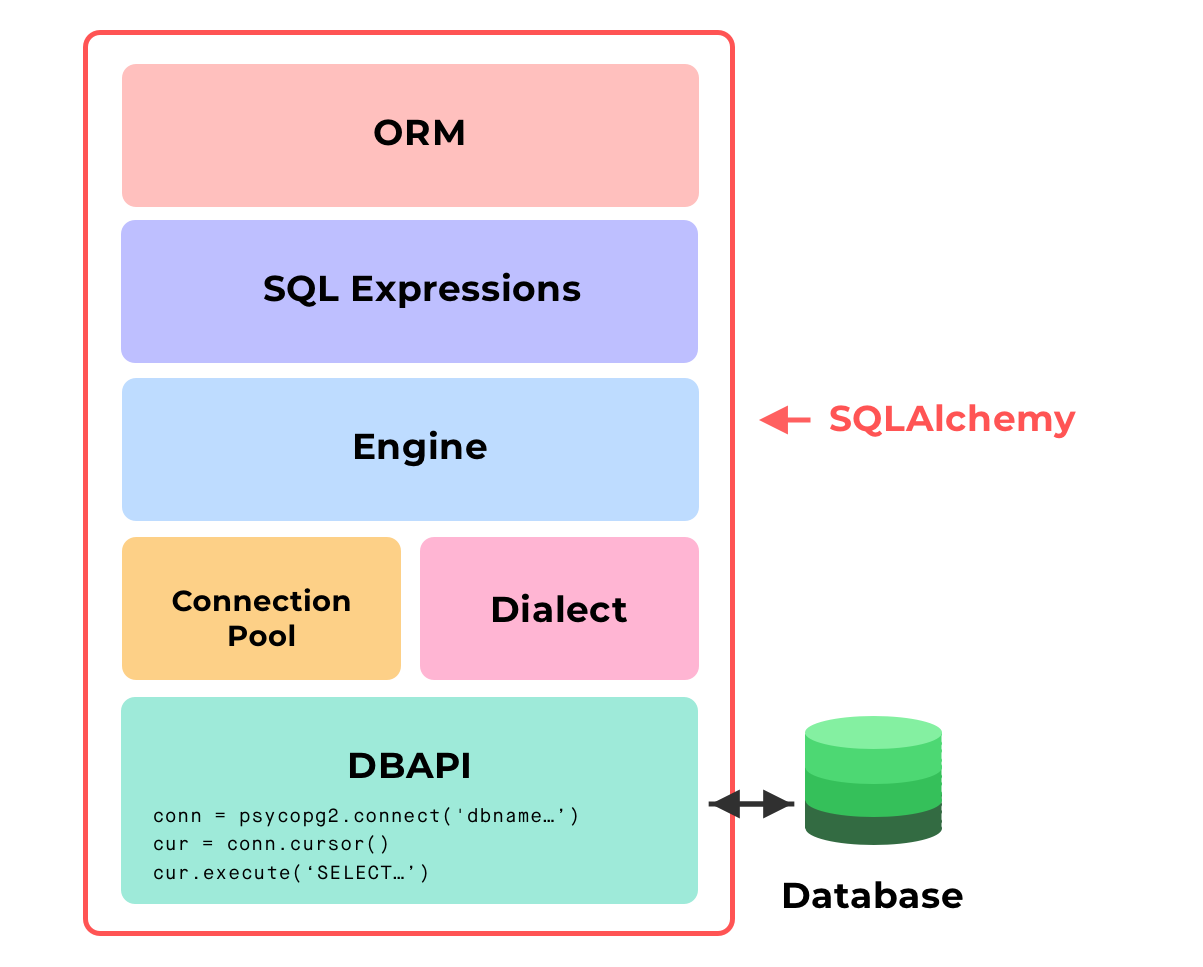02. Layers of Abstraction
in SQLAlchemy Intro
SQLAlchemy's Layers of Abstraction
SQLAlchemy is broken down into various layers of abstraction. Let's go through each layer in depth.
ND004 C01 L03 02 Layers Of Abstraction
Takeaways
- Without SQLAlchemy, we'd only use a DBAPI to establish connections and execute SQL statements. Simple, but not scalable as complexity grows.
- SQLAlchemy offers several layers of abstraction and convenient tools for interacting with a database.
SQLAlchemy vs psycopg2
- SQLAlchemy generates SQL statements
- psycopg2 directly sends SQL statements to the database.
- SQLAlchemy depends on psycopg2 or other database drivers to communicate with the database, under the hood.
SQLALchemy lets you traverse through all 3 layers of abstraction to interact with your database.
- Can stay on the ORM level
- Can dive into database operations to run customized SQL code specific to the database, on the Expressions level.
-
Can write raw SQL to execute, when needed, on the Engine level.
-
Can more simply use
psycopg2in this case
-
Can more simply use
Good Design Practice (Opinion)
Here's my opinion on interacting with databases using good design practice.
-
Keep your code Pythonic. Work in classes and objects as much as possible.
- Makes switching to a different backend easy in the feature.
- Avoid writing raw SQL until absolutely necessary
In the next series of videos, we'll go over every layer of abstraction in SQLAlchemy and what they offer.

Layers of SQLAlchemy
- DBAPI
- The Dialect
- The Connection Pool
- The Engine
- SQL Expressions
- SQLAlchemy ORM (optional)